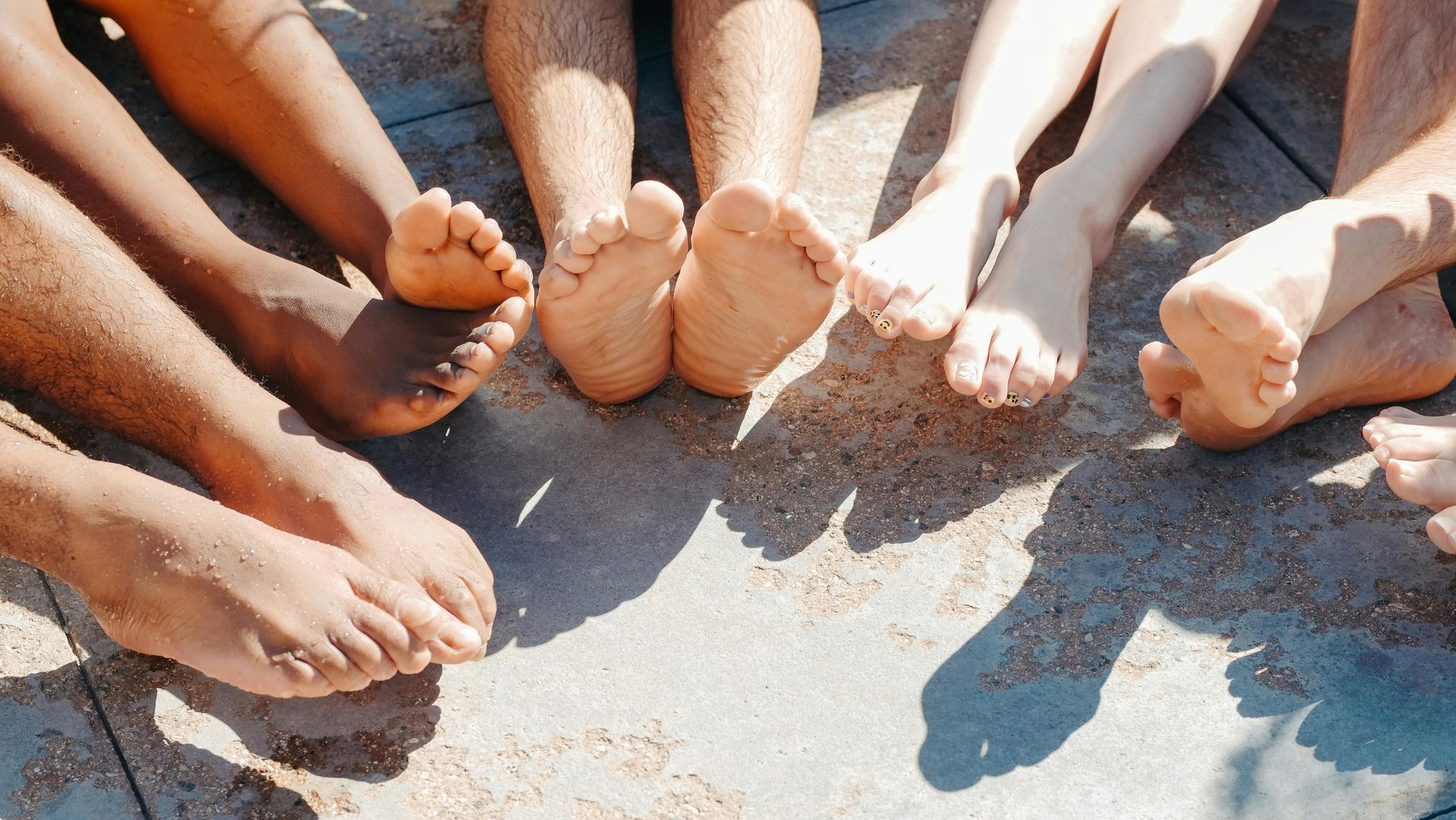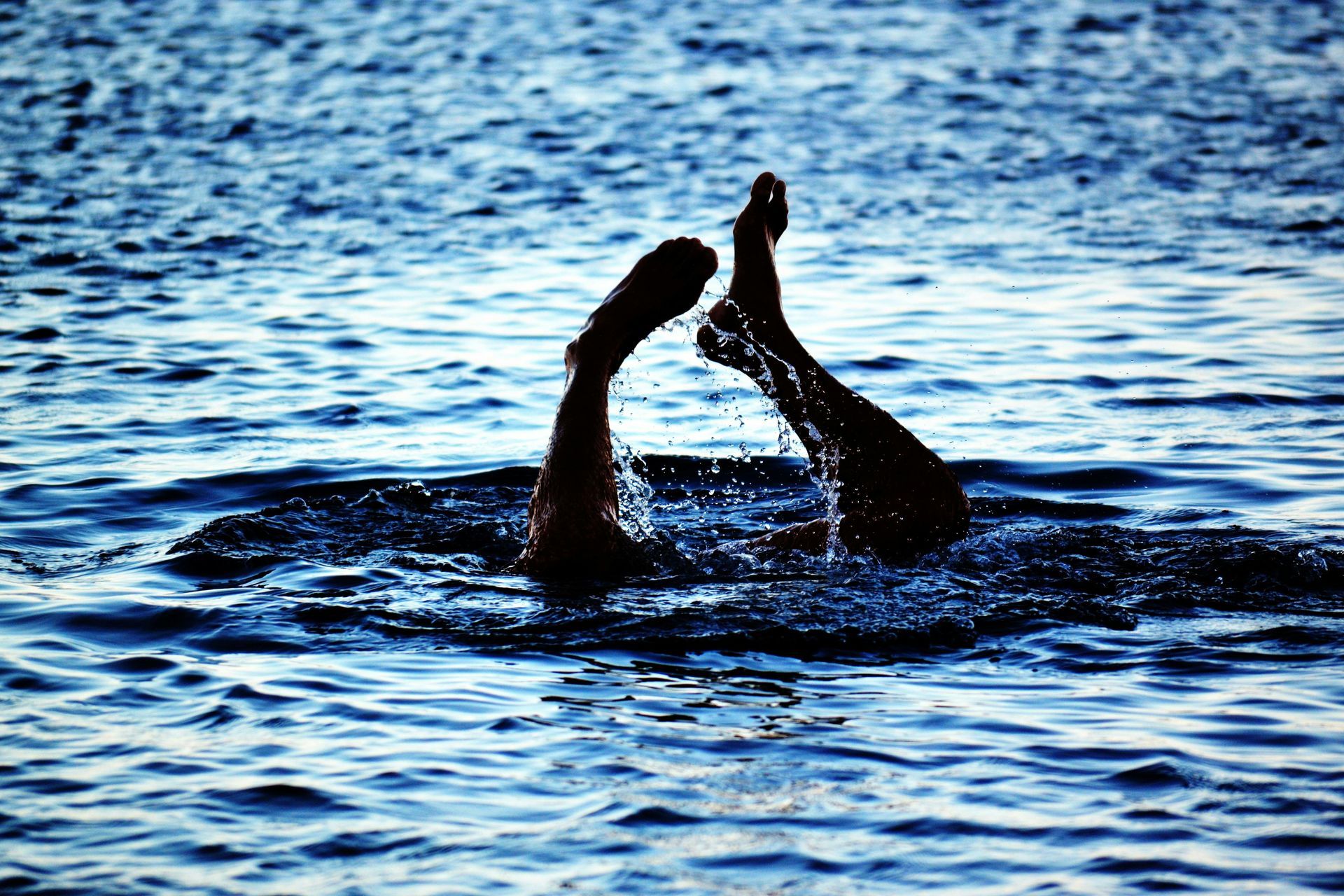Funny nails - The truth about fungal toes
Val Reeves • 1 October 2020

As the weather gets colder and wetter, many of us will be finding ourselves switching from open toed flip flops or sandals, into closed toe trainers, shoes or boots...dark and cosy new homes for our toes...and also a whole host of pathogens who thrive in the dark and warmth, and who, without proper foot hygiene, turn into some pretty nasty foot and nail infections. Today we are taking a closer look at fungal nail infections...
Fungal nail infections are common and can affect both the fingernails and the toenails. The problem usually affects more men than women and becomes more common the older you become. The infection is actually in the nail bed but it affects the nails.
A fungal nail infection causes visual changes to the nail. It causes the nail to change colour, thicken and become brittle. As the infection progresses some nails may start to produce a distinct odour. Around half of all nail problems are due to fungal nail infections. The fungus that is found in nails can be found in other areas of the body.
Nail fungus is very common, in fact it is said that 3-12% of the population have it. You may have one or more affected nails and it is actually more of an aesthetic problem as it won't cause any health issues but people are concerned about what it looks like, as well as it being highly contagious, so it can be easily spread to other nails, other areas of the foot or other areas of the body.
There are four areas on the nail plate that fungus is most commonly found:
Distal subungual infection
- An infection affecting the sides of the nail and the nail beds and causing a change in the look of the outer edge of the nail
White superficial infection
- A fungus attacking the top layer of the nail and creating well defined white spots, this is most often found when removing nail varnish after an extended period of wear, this can easily be removed by filing the top layer of the nail.
Proximal subungual infection
- Less common and appears as yellow dots starting at the base of the nail - normally found in people with a compromised immune system or from minor trauma
Candida Infection
- A yeast infection normally due to a prior injury but can become worse due to excessive washing of the limb.
What causes it?:
Fungi called Dermatophytes live harmlessly on the skin but can often multiply and lead to infection in dark, warm and moist environments such as the feet. Certain shoes can cause the feet to become hot and sweaty which can lead the fungi to multiply quickly. Not keeping the feet clean and dry can also speed up the infection risk. The fungus actually makes the home below the nail in the nail bed and then causes damage to the nail. If cleaning under the nails is done too aggressively or with the wrong tool you can cause damage to the skin, this then allows the fungus to further take hold under the nail.
Treatment Options:
Before we can begin a treatment plan, it is important that we first get an accurate diagnosis, as what appears to be a fungal nail could in fact be nail trauma or possibly a different condition entirely.
Now it used to be that we would have to send a sample of a nail to a lab for analysis, a costly and timely procedure, however, now all we need is 5 minutes!
Using Dermatophyte Test Strips, we can now test and diagnose fungal nail infection in just five minutes in clinic and during your appointment, ensuring that we can immediately start the correct treatment path saving time and money.
Once a fungal infection has been confirmed, your Podiatrist can advise you on the best course of treatment for your particular problem.
Because people think that fungal nail looks unpleasant, people will seek treatment, however fungal nail infections on otherwise healthy people rarely have any serious consequences but don’t usually go away on their own. If left untreated the fungus may spread to other areas. Nail fungus may increase the risk of a bacteria infection in surrounding skin in people with weakened immune systems eg Diabetes.
Your Podiatrist will reduce any thickening of the nail and may painlessly remove areas with significant fungal infection and will discuss with you which of the possible treatment options is best suited to you.
1) Topical treatment (from the outside)
- paint, powders and creams. These may need to be applied for several months whilst the healthy nail grows up. They are generally well tolerated by most people. The Podiatrist will advise on the most suitable topical treatment for you and give advice on how to apply.
2) Systemic treatment (tablets)
- these are not suitable for all as there are possible stomach and bowel side effects and rarely but significantly, liver damage can occur so regular liver function blood tests are required. The tablets usually need to be taken for 3 months (less for fingernails).
Prevention:
- Thorough washing and particular attention to ensure feet are dried thoroughly using either a towel or a hair dryer.
- Ensuring footware is not too tight which may cause damage and introduce infection.
- Wearing socks suitable for washing at 60 degrees Celsius.
- Ensure that socks and shoes are changed regularly especially if wet.
- Treatment of any athletes foot to the skin to prevent spread to the nails.
- Avoid sharing towels, shoes and socks.
- You can also use an antifungal powder or spray as a preventative - discuss the best options for you with your Podiatrist.
Fact or Fiction:
There are many different non proven ‘treatments’ found on the internet.
These include Vicks vaporub, vinegar, lemon juice and tea tree oil. Whilst some of these undoubtedly contain anti microbial elements there have been insufficient clinical trials to prove their effectiveness and it is thought that any improvement seen is actually due purely to a bleaching effect rather than actually killing or treating the fungal spores.
At this stage there is little evidence to support using these items and care must be taken with all of these “cures” to ensure the skin surrounding the nail is not burned or damaged possibly leading to a secondary bacterial infection alongside the original fungus.












